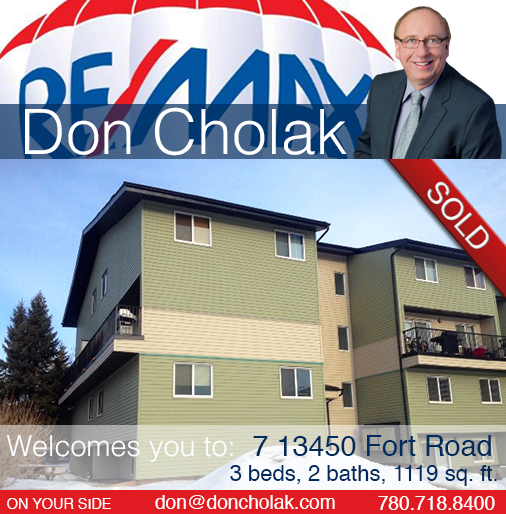
Thank-you! It was a pleasure helping you sell your home!
Are you ready to put Don’s 35 years of business and sales experience to work for you? Simply click on the appropriate red button below:




St. Albert Real Estate and Edmonton Real Estate brought to you by Don Cholak, a Top Producer with Royal Lepage Premier Real Estate St. Albert

Thank-you! It was a pleasure helping you sell your home!
Are you ready to put Don’s 35 years of business and sales experience to work for you? Simply click on the appropriate red button below:
Source: Above RE/MAX Magazine
Moving can be stressful for every family member – including the four-legged ones. The tough part is you can’t explain to your dogs and cats what’s happening. Every animal reacts differently to new living quarters, and temperament has a lot to do with it. Some pets take a move in stride, while others exhibit anxiety or insecurity for days or weeks.
Here are some things to consider as the big move approaches and after you’re in your new home:
1. A little help from the vet
Ask your veterinarian for recommendations on easing the transition. If your pet is generally anxious or high-strung, perhaps it’s worth asking whether a mild calming medication might be right for your pet for the first few days after the move. It’s not uncommon for vets to prescribe gentle stress relief for travel. Your veterinarian may also suggest additional vaccinations depending on the area and climate you’re moving to.
2. A pre-move home tour
If possible, take your pet to the new home for a visit before the official moving day. That way, it will be familiar with the house, yard and even new smells when you actually move in.
3. Time to explore
After you move in, give your pet time to explore the house gradually, rather than letting it loose immediately to roam at will. Limit it to one area – perhaps the kitchen – for a few hours until it calms down. Show the pet where you’ve placed its familiar items like the food dish, water bowl and bed. You might want to keep a dog on a leash when first allowing it to tour the greater part of the house. If you have a fenced yard, avoid letting pets out unsupervised for several days until you’re sure they can’t climb or dig out from under the fence.
4. The benefit of pet walks
Take your dog for walks and good sniffing around the entire neighborhood. While you acclimate to your new location primarily by visual cues, dogs depend on their olfactory sense. Leave and enter the new home by different doors during the early walks, so your dog develops a good sense of direction and knows exactly where home is.
5. How cats handle moves
Territorial by nature, cats often experience more issues with moving than their canine counterparts. Keep your cat safe in its carrier upon arrival, placing it in a quiet area. When the hubbub dies down, let it out in an enclosed room away from main traffic areas. Provide your cat with familiar objects, such as a bed, litter box and toys. Spend lots of time with it and encourage it to explore the room, perhaps by strategically placing cat treats. Outgoing, friendly cats might be ready for further exploration within a day or two after arrival, while shy cats might take much longer.
6. Additional supervision
While you have a million things to do after moving into a new house, try to have at least one family member home at all times during the first week or so. Have meals at home and establish a routine for your furry friends as soon as possible. Feed pets and take the dog for walks at the same time as you did at your old home.
7. Update pet IDs
Because accidents happen, update your pet’s identification information before you move. Your new municipality might require licensing within a certain time frame, but you need updated tags from day one of your move. If your pets are microchipped, contact the registration company and give them the new information. This way, if Fluffy or Fido slip out the door, anyone who finds them can easily return them to their new home.
2015 Spring Market Trends Report for Alberta by RE/MAX of Western Canada
Edmonton
Up 2% – Average Residential Sale Price: $368,002
Edmonton’s average residential sale price proved resilient despite the drop in oil prices that led to a slower spring market in Edmonton. Layoffs and job uncertainty in the oil industry, as well as potential cuts to the provincial budget, have made potential buyers cautious as they wait for signs of stability. Inventory has increased and sales have decreased as Albertans wait to see how the overall economy is impacted over the next few months.
– Condominiums remain a popular housing type, particularly for younger first-time buyers
– The upper-end market has remained resilient
– Sales in the first quarter of the year have decreased approximately 15 per cent compared to the same period in 2014
– Inventory is up approximately 26 per cent year-over-year, creating buyer’s market conditions
Future Trends
– The downturn in the oil industry is expected to slow interprovincial migration, bringing fewer people from Eastern Canada to the city for jobs
– Over $5 billion in construction in downtown Edmonton is expected to continue to provide ample employment
– The Royal Alberta Museum, a $360 million project, is expected to reach completion in 2016. Two other significant projects in the region are the Delta Hotel and the Stantec Building – both mixed-use developments
– Provincial budget cuts could lead to job loss for government employees in Edmonton
– The RE/MAX 2015 average residential sales price expectation for Edmonton has been revised from a 4 per cent increase to no increase
Condo Market
Edmonton’s condo market continues to attract younger first-time buyers, who are drawn to a downtown lifestyle and affordable entry point into the market. Over ten high-rise condo buildings are currently under construction in downtown Edmonton.
First-Time Buyers
First-time buyers continue to be the primary drivers of Edmonton’s housing market, and starter homes in the $250,000 to $400,000 range are quick to sell. These buyers are increasingly attracted to a more urban lifestyle, choosing location and amenities above yards and square footage.
Upper-End Market
The upper-end of the market has been resilient, with those properties priced at over $1 million still selling very well. Sales between $500,000 and $1 million have been hit harder by the recent downturn, and there is considerable inventory on the market in that price range.
Calgary
Down 2% – Average Residential Sale Price $474,251
Despite oil price volatility, house prices in Calgary have been resilient, only depreciating modestly in the first quarter compared to the first quarter of last year. However, market activity has decreased and inventory levels are higher than last year. Lower sales activity is more reflected in houses priced above $500,000, although properties in the right location are still in demand. Sales of houses priced below $500,000 and entry-level condominiums are active as low interest rates continue to attract buyers.
– Low interest rates have mitigated some of the effects of oil price volatility
– Inventory is high in the region creating buyer’s market conditions; however, the rate at which it had been climbing has slowed considerably
– Average days on market has increased from 28 to 39 days
– Potential buyer pipeline is healthy as the average open house is attracting 10 to 30 visitors, although many buyers are waiting for the market to stabilize before making their purchase
– Properties priced appropriately in good neighbourhoods can attract multiple offers
Future Trends
– Sales are expected to increase as Albertans sense that oil prices have stabilized and are showing signs of recovery
– New construction starts have decreased, which is expected to help stabilize inventory levels
– The RE/MAX 2015 average residential sale price expectation for Calgary has been revised from a 3 per cent increase to a 2 per cent decrease
Condo Market
Entry-level condominiums continue to attract buyers, while sales of more expensive units have decreased. However, overall condominium inventory has increased significantly.
First-Time Buyers
First-time buyers continue to purchase property in the region; although, many are waiting on the sideline for the economy to stabilize. Mortgage brokers have noticed a lot more interest in buyers wanting to be pre-qualified for mortgages as buyers are eager to take advantage of the low interest rates once they regain confidence that the market is stable.
Upper-End Market
The upper-end market has been affected by oil price volatility. Sales in properties over $600,000 has slowed, and higher-end homes in the inner core have witnessed a slowdown.
Are you ready to put Don’s 35 years of business and sales experience to work for you? Simply click on the appropriate red button below:
Source: April 15, 2015 edition of Real Estate Weekly
Conducting an open house is a good way to show your property to many people in a short amount of time. While your REALTOR® will advertise and manage the event, it is up to you to make sure that your home is in showing condition. Here are some things you can do to make it a great first impression.
Start with the outside:
– Do a visual check of the front of the house from across the street. Does it have curb appeal? It should look inviting with a trimmed lawn and flower bed and a freshly painted front door.
– Polish door handles and knockers and replace worn items such as a rusty doorbell.
– Consider adding a new doormat and flowering plants at the entrance.
– Do the windows need cleaning?
– Are there oil stains on the driveway that need removing?
– While outside, don’t forget to check the side and back yards.
– Add some flowering plants to the back as well.
– Rearrange the outdoor furniture to look inviting.
– Put away gardening tools.
– Tidy around the grill area.
Now the inside:
– Cleanliness, space, smell and lighting are key.
– Get your house in tip top condition by cleaning and clearing away clutter.
– Vacuum the carpet, maybe even steam clean.
– Make sure your floors are clean and shiny.
– Touch up nicks on walls and make sure the porcelain sinks and tubs shine.
– All metallic fixtures and surfaces should shine.
– Your kitchen and bathrooms should pass the white glove test.
– Be conscious of any lingering odors such as smoke, pets, or strong-smelling foods. You may need to air out your home prior to the open house.
– Consider grinding fresh lemons in the garbage disposal.
– And don’t forget to empty out all trash.
– Look at your countertops in the kitchen, bathrooms and the tops of your bureaus. Do they seem cluttered? Clear away and store as much as possible. You want your home to seem spacious.
– Make any small repairs that you can.
– Next, set the mood. You want buyers to be able to picture your home as their own.
– You may want to rearrange the furniture so that rooms look more spacious.
– Add accessories from rooms with too many furnishings to those that are bare.
– Lighting is also important to creating an atmosphere.
– Bright lights provide a cheerful environment and make a small space appear larger.
– Pull back all drapes and open the blinds.
– Turn on all the lights.
– Make sure all the light sockets have working bulbs and install the maximum wattage bulb that is safe for that fixture.
– For rooms that you want to have a warm, cozy feeling, use softer lights.
– Don’t forget little touches such as fresh flowers, lit candles in the bathrooms, new logs in the fireplace, or a bowl of fresh fruit on the kitchen counter.
– You may even want to set your dining room table with color coordinated table settings.
Reminders:
– Some of the people coming to view your home may be thieves. Make sure that all valuables are put away.
– You may want to be out of the house for the open house so that the viewers will be free to discuss the home without worrying about hurting any feelings.
– Consider taking your pets with you or ask someone to watch them so that they are not a distraction to the open house. This is also courteous to those who may have any allergies.
First impressions are lasting impressions!
Are you ready to put Don’s 35 years of business and sales experience to work for you? Simply click on the appropriate red button below:
Source: Pillar to Post e-Newsletter
Now is a great time for homeowners to take steps toward saving energy and reducing their environmental impact. While replacing those old leaky windows and installing ceiling fans are great ideas, there are also small things that can be done around the house to lower energy consumption and reduce one’s carbon footprint. Here are some simple, sustainable adjustments that can make a real difference in energy savings,
Switch to CFL or LED bulbs. These can be huge energy savers; they burn significantly less energy and can last up to ten times longer than incandescent types so they’re more convenient, too. Users of CFL and/or LED bulbs enjoy reductions in heat production, energy use, and electric bills.
Are you ready to put Don’s 35 years of business and sales experience to work for you? Simply click on the appropriate red button below:
Sources: www.elcaribe.com, www.diariolibre.com, www.diariolibre.com
According to reports in the Dominican sports media, 82 Dominicans are on the Major League Baseball rosters. Dominicans make up the largest group of foreign-born players in the league. The team with the highest number of Dominican players is the Pittsburgh Pirates with seven: Antonio Bastardo, Arquimedes Caminero, Radhames Liz, Francisco Liriano, Pedro Alvarez, Gregory Polanco and Starling Marte. Next follows the Milwaukee Brewers with six, and the Los Angeles Dodgers, New York Yankees and New York Mets with five apiece. Only three MLB teams do not have any Dominicans on their rosters: the Tampa Bay Rays, Atlanta Braves and the Washington Nationals.
Diario Libre reports that wages of Dominicans in Major League Baseball adds up to US$423 million in 2015.
Are you ready to put Don’s 35 years of business and sales experience to work for you? Simply click on the appropriate red button below:
Source: www.ozy.com
Most people visiting the Dominican Republic jump straight to La Romana or Punta Cana, the Cozumel and Cancún of the DR. But if you’re not keen on all-inclusive high-rises and vacations seen from a golf cart, there’s another, delightful option. Sticking off the northeast of Hispaniola like a strange little mutant crab claw, the Samaná Peninsula offers a taste of the Caribbean as it was, pre-Señor Frog’s.
This historic locale has been the home to a long line of independent thinkers. The Caribbean’s most feared pirates tromped around on the coast. And some of the resident Dominicans descended from escaped American slaves whose boat ran aground in 1864. The peninsula is “considered the jewel in the crown of the Dominican Republic,” says Andy Brachhold, who lived there 13 years and runs a website dedicated to the peninsula. “It evokes a reverence among many Dominicans when mentioned.”
Gringos love it too. Bumping down the road to one of the pincers of the crab claw, you’ll find an expat outpost called Las Galeras, squeezed between some of the most beautiful beaches in the country — including the acclaimed Playa Rincón. Many of the French and Italians who live here came to get off the grid, yet they’ve managed to put Las Galeras back on it, running a community of posadas and restaurants serving European cuisine with Dominican ingredients. Blue cheese fondue and steamed lionfish, anyone?
Nevertheless, “there’s no enclave of gringos,” says Cindy Neill, a 45-year-old Californian who came 11 years ago and never left. “The Dominicans outnumber the tourists, but we’re all here together, interacting.” It’s a sharp contrast from the sequestering that goes on in the resorts of Punta Cana.
But despite the European air, the real reason to go is much more rustic. Samaná is a place where horses roam the beaches and fish are sold out of truck beds, where dirt roads lead past fruit stands to deserted turquoise waters, where the smoke of grilled street meat billows on lazy Saturday nights. It’s easy to make friends in a place like this, and it’s easy to not leave. And that’s not even mentioning the spectacular whale watching or the diving.
However, the typical drawbacks of off-the-beaten-path tropical hideaways apply. Neill points to the increasing stink of sex tourism. And even after the four-hour bus ride across the country, “it’s still like the outback a little bit,” she says. Cellphones rarely work, and water is only “almost always” available (they used to only occasionally have water, but got a new aqueduct). She says the people who enjoy it most are those “who don’t need everything working perfectly.” For that reason, the place attracts a younger, adventurous crowd of independent travelers.
But the magic might not last forever. In 2006, an airport opened on the peninsula, followed in short order by a $150 million toll road, further linking the crab claw with the capital. So we suggest going soon, and dodging the beaten path by reverting to the bumpy local roads to get there. Few tourists see the sprawling interior of the country: the variations of green in the banana and pineapple fields, the ramshackle farming communities, the barefoot children racing the bus, the blue mist on the mountains. The real DR.
Are you ready to put Don’s 35 years of business and sales experience to work for you? Simply click on the appropriate red button below:
Source: www.edition.cnn.com
A little over five centuries ago, the unassuming district of Ocoa Bay in the Dominican Republic became the first wine-producing region of the Americas. Legend has it that Spanish explorers cultivated grapes there for six years before setting sail for Central America in search of the great Aztecan Empire. But when they left, the Conquistadors took their quaint interest in viticulture with them. Local farmers swiftly returned to growing the tropical fruits and vegetables natural to the Caribbean island.
Now, a new vineyard and real estate development is looking to tap into this wine-making history by providing the Caribbean’s 21st-century own take on enotourism. The Ocoa Bay development lies 90-minutes drive from the capital, Santo Domingo, and offers newly built homes with specially designed vineyard plots that allow residents to produce their own wine. Spectacular ocean views and a climate similar to the Mediterranean in summer ensure the 2 million square meter site is a popular spot.
Yet, according to architect Gabriel Acevedo, convincing colleagues and other stakeholders of the area’s potential as a property development come vineyard was initially a tough sell. “We were labeled as crazy — probably because I wasn’t an agronomist but an architect — that we even dared to plant 10,000 square meters of grapevines,” Acevedo said.
Sustainability is a key factor in Ocoa Bay’s business portfolio — one Acevedo believes to be a game changer for the Dominican Republic. Project leaders say they spent time with ecology, land management and wildlife consultants before commencing building work in an effort to minimize any negative environmental impacts. “Ocoa Bay has three pillars, one is the production of high quality wine and fruit cultivation, the others are the hotels and the real estate sector,” Acevedo said.
Developers are relying on the lands’ unique dry climate which receives on average of 600 millimeters of rainfall per year to sustain the vineyard. The construction of the first 30 ecological and vineyard villas are scheduled to begin in December with 33% pre-sold. High-end real estate companies like Christie’s, meanwhile, are already adding Ocoa Bay to their exclusive listings.
The vineyard’s real estate adviser, Cesar Herrera insists that enabling investors to snap up a private property where they can produce their own wine is a unique selling point. “You don’t have anywhere in the world (that has) the possibility to live inside a vineyard and to own,” Herrera said. “You have several options (of growing grapes) … (and) you will be able to rent your home when you are not there,” Herrera added.
In just over two years, Ocoa Bay has had five successful harvests. Volumes produced remain low, but quality is high. The price per bottle starts at $15 dollars, setting the bar high for a still young wine producing market.
The Ocoa Bay executive team say they’re optimistic about the overall success of this venture. “It’s the new, Napa Valley of the Caribbean,” Acevedo said. “The new Bordeaux or Rioja. A unique and new destination in the Caribbean.”
Are you ready to put Don’s 35 years of business and sales experience to work for you? Simply click on the appropriate red button below:
Source: www.yegishome.ca
By Angie Calder Telepenko
Real estate activity in the whole capital region was high last year, but these neighbourhoods were the top ten in MLS® System sales for single family homes and condominiums.
1. Oliver
At 414 sales in 2014, this was Edmonton’s hottest neighbourhood for MLS® System sales. This area immediately west of the downtown core is made up mostly of condominiums and commercial properties, although you will still find some heritage homes from the days when it was considered the west end.
2. Rutherford
This community came in second, at 315 sales. It is one of the many neighbourhoods that have sprung up in Edmonton’s southwest in the last couple of decades. Rutherford was designed to include an extensive pedestrian network, and is the choice of many young professionals.
3. Downtown
The downtown core was third, at 273 units sold. It is the financial and business heart of the city, but interspersed are a lot residential land uses. It has been the hub of Edmonton since the turn of the last century, although a resident of that time would not recognize very much today. The area has benefited from the downtown revitalization program which began in the 1990s.
4. The Hamptons
265 MLS® System sales were recorded in 2014 in this west end neighbourhood, which began its development in the early years of this century. Although it is on the periphery of the city, it contains shopping and other amenities, as well as access to the Anthony Henday and other transportation corridors, which means residents can quickly journey to work and leisure pursuits elsewhere.
5. Summerside
This south side neighbourhood, which reported 235 units sold last year, is unique in that it contains Edmonton’s first purpose-built man-made lake, which provides swimming and fishing exclusively for the use of residents. This is reflected in the nautical look of many of the homes, reminiscent of Summerside, PEI which gave the community its name.
6. South Terwillegar
There were 219 residential sales here, in this community which reflects a variety of dwelling types, as well as many open spaces and pedestrian linkages. With construction starting in 2003, and excellent access to arterial roads, it is another newer neighbourhood that attracts a lot of young families.
7. Windermere
Seventh on the list with 176 units sold, this area contains a mix of homes ranging from inexpensive condominiums to upscale estate homes overlooking the river valley. It was part of Strathcona County until the city’s annexation in 1982. Though most of the development is recent, a few older homes, legacies from when it was agricultural land, can still be found.
8. Strathcona
This historic neighbourhood, which began development in 1891, was originally a separate town and only became part of the city of Edmonton in 1912. Last year 168 homes were sold there through the MLS® System. Although most dwellings are now apartments, there still are many stately heritage homes which were built by early movers and shakers. The area has its own artsy atmosphere, due to the Whyte Avenue shopping and entertainment district, and its proximity to the University of Alberta.
9. Westmount
157 units were sold last year in Westmount, another mix of heritage homes and walk-up apartments. Extensive infill development has occurred so there are lots of newer homes as well. 124 Street is the chief transportation artery, and has also developed into an arts, restaurant and shopping district.
10. Garneau
Rounding out the top 10 is Strathcona’s next door neighbour Garneau, which reported 149 MLS® System sales in 2014. Many of its residents are brought there by the nearby University of Alberta. Some of the old historic homes have been converted to U of A student housing. The area also attracts professionals who work downtown, which is across the river and easily accessible via the High Level and Walterdale Bridges.
These neigbourhoods are an intriguing mix of old and new, starter and upscale… it will be interesting to see what the next year has in store in Edmonton’s real estate market.
Source: www.cmhc-schl.gc.ca
As a result of its annual review of its insurance products and capital requirements, CMHC is increasing its homeowner mortgage loan insurance premiums for homebuyers with less than a 10% down payment. Effective June 1, 2015, the mortgage loan insurance premiums for homebuyers with less than a 10% down payment will increase by approximately 15%.
For the average Canadian homebuyer who has less than a 10% down payment, the higher premium will result in an increase of approximately $5 to their monthly mortgage payment. This is not expected to have a material impact on housing markets.
Premiums for homebuyers with a down payment of 10% or more and for CMHC’s portfolio insurance and multi-unit insurance products remain unchanged. The changes do not apply to mortgages currently insured by CMHC.
“CMHC completed a detailed review of its mortgage loan insurance premiums and examined the performance of the various sub-segments of its portfolio,” said Steven Mennill, Senior Vice-President, Insurance. “The premium increase for homebuyers with less than a 10% down payment reflects CMHC’s target capital requirements which were increased in mid-2014.”
CMHC is mandated to operate its mortgage loan insurance business on a commercial basis. The premiums and fees it collects and the investment income it earns cover related claims and other expenses while providing a reasonable rate of return on its capital holding target.
CMHC contributes to the stability of Canada’s housing finance system, including housing markets, by providing qualified Canadians in all parts of the country with access to a range of housing finance options in both good and bad economic times.
Effective June 1st, CMHC Purchase (owner occupied 1 – 4 unit) mortgage loan insurance premiums will be:
| Loan-to-Value Ratio | Standard Premium (Current) | Standard Premium (Effective June 1st, 2015) |
| Up to and including 65% | 0.60% | 0.60% |
| Up to and including 75% | 0.75% | 0.75% |
| Up to and including 80% | 1.25% | 1.25% |
| Up to and including 85% | 1.80% | 1.80% |
| Up to and including 90% | 2.40% | 2.40% |
| Up to and including 95% | 3.15% | 3.60% |
| 90.01% to 95% – Non-Traditional Down Payment | 3.35% | 3.85% |
CMHC reviews its premiums on an annual basis and will announce decisions on premiums following this review.
Canada Mortgage and Housing Corporation (CMHC) has been Canada’s authority on housing for more than 65 years.
Are you ready to put Don’s 35 years of business and sales experience to work for you? Simply click on the appropriate red button below:
Source: Edmonton Real Estate Board
Edmonton and Area Average Price Still Up
Despite a decline in all residential sales over those reported in March of 2014, last month saw continued growth of residential prices for the Edmonton Census Metropolitan Area CMA of 3%. The average sales price of a single family home was $438,880 – up 1.5% y/y; condo was $249,841 – up 1.2% y/y; and duplex/rowhouse was $354,022 – up 6.9% y/y.
Sales are down in all categories except duplex/rowhouse which are up over 6%. Single family sales were 876 down 4.5% over last March (917 reported). 416 condos sold last month compared to 474 in March 2014. All residential sales for March were reported as 1,453, down 6.5% from 1,554 reported last year.
“The fact that our prices did not have the dramatic increases seen over the past few years in other cities like Calgary, Toronto and Vancouver means we have not experienced the same overvaluation.” REALTORS® Association of Edmonton President Geneva Tetreault explains, “That is why our prices are not taking the same hit even though our inventory is way up and sales are slightly down. A more accurate valuation should keep our average prices more stable.”
March 2014 had 14 million-dollar plus sales (30 YTD), March 2015 had 8 million dollar plus sales (19 YTD). “Last year we saw a dramatic increase in sales of homes priced over a million. Even though the number of those high price sales are down this year, our average price is up. That is a good sign that we are not seeing our average prices inflated,” says Tetreault. “The big story continues to be the increase in inventory. We ended 2014 with a fairly low inventory. The influx of new listings means that buyers now have the opportunity to be a little more choosey. Having a REALTOR® help you navigate the market is always a wise decision, particularly in a complex market like ours.” Residential listings are up over 31% from last March with 3,152 new listings coming on to the MLS® System in the Edmonton CMA. That left us with an ample inventory of 5,944 properties for sale.
Rural areas seem to be seeing the same trends with total rural sales down 8% from 156 reported in March 2014 to 143 reported this year. Rural listings are also up, but only by 12%, a much smaller margin than the Edmonton CMA. Over 699 million dollars in residential sales through the REALTORS® Association of Edmonton occurred in March 2015.
| March 2015 | M/M % Change | Y/Y % Change | |
| SFD2 average3 selling price – month | $438,880 | 1.88% | 1.48% |
| SFD median4 selling price – month | $412,500 | 3.13% | 3.15% |
| Condominium average selling price | $249,841 | -0.10% | 1.15% |
| Condominium median selling price | $232,000 | -1.69% | 0.87% |
| All-residential5 average selling price | $373,005 | 2.92% | 3.08% |
| All-residential median selling price | $360,000 | 2.86% | 5.42% |
| # residential listings this month | 3,152 | 21.98% | 31.17% |
| # residential sales this month | 1,453 | 56.07% | -6.50% |
| # residential inventory at month end | 5,944 | 18.69% | 34.69% |
| # Total6 MLS® System sales this month | 1,856 | 33.11% | -7.01% |
| $ Value Total residential sales this month | $596 million | 55.85% | -2.44% |
| $ Value of total MLS® System sales – month | $699 million | 57.84% | -2.74% |
| $ Value of total MLS® System sales – YTD | $1.55 billion | 92.90% | -10.70% |
1 Census Metropolitan Area (Edmonton and surrounding municipalities)
2 Single Family Dwelling
3 The total value of sales in a category divided by the number of properties sold
4 The middle figure in a list of all sales prices
5 Residential includes SFD, condos and duplex/row houses.
6 Includes residential, rural and commercial sales
Woodlands St. Albert Real Estate Statistics – March 2015
Click here for all Woodlands homes for sale in St. Albert. On average, it takes 8 days to sell a Woodlands home. The average list price of a Woodlands home in March was $354,250, and the average sold price was $354,500. There were a total of 2 homes sold in Woodlands in March, and 4 homes sold in Woodlands from January to March. The highest year-to-date sold price of a Woodlands home is $461,000. There are currently 11 homes and 2 condominiums for sale in Woodlands.
Ready to buy in Woodlands? – CLICK HERE!!!
Ready to sell in Woodlands? – CLICK HERE!!!
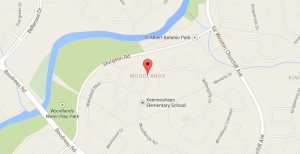
Sturgeon Heights St. Albert Real Estate Statistics – March 2015
Click here for all Sturgeon Heights homes for sale in St. Albert. A total of 2 homes were sold in Sturgeon Heights in March, and a total of 4 homes were sold in Sturgeon Heights from January to March. Currently, there are 3 Sturgeon Heights homes for sale. On average, it takes 13 days to sell a Sturgeon Heights home. The average list price of a Sturgeon Heights home in March was $331,450, and the average sold price was $307,750. The highest year-to-date sold price of a Sturgeon Heights home was $395,000.
Ready to buy in Sturgeon Heights? – CLICK HERE!!!
Ready to sell in Sturgeon Heights? – CLICK HERE!!!
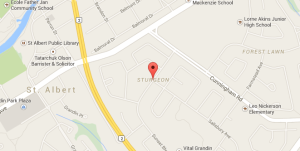
Pineview St. Albert Real Estate Statistics – March 2015
Click here for all Pineview homes for sale in St. Albert. There are currently 8 homes for sale in Pineview. A total of 4 homes have sold in Pineview from January to March. The highest year-to-date sold price of a Pineview home is $514,000.
Ready to buy in Pineview? – CLICK HERE!!!
Ready to sell in Pineview? – CLICK HERE!!!
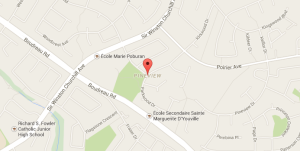
Oakmont St. Albert Real Estate Statistics – March 2015
Click here for all Oakmont homes for sale in St. Albert. There are currently 26 homes and 1 condominium for sale in Oakmont. From January to March, a total of 15 homes have been sold in Oakmont, and a total of 9 homes were sold in Oakmont in March. On average, it takes 20 days to sell an Oakmont home. The highest year-to-date sold price of an Oakmont home is $806,522. The average list price for an Oakmont home in March was $434,900, and the average sold price was $427,125.
Ready to buy in Oakmont? – CLICK HERE!!!
Ready to sell in Oakmont? – CLICK HERE!!!
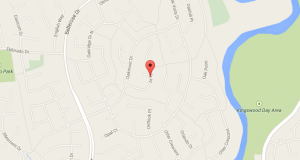
North Ridge St. Albert Real Estate Statistics – March 2015
Click here for all North Ridge homes for sale in St. Albert. The average list price for a North Ridge home in March was $506,825, and the average sold price was $502,250. The highest year-to-date sold price of a North Ridge home is $715,000. A total of 21 homes were sold in North Ridge from January to March, and a total of 14 homes were sold in North Ridge in March. On average, it takes 39 days to sell a North Ridge home. There are currently 26 homes and 2 condominiums for sale in North Ridge.
Ready to buy in North Ridge? – CLICK HERE!!!
Ready to sell in North Ridge? – CLICK HERE!!!
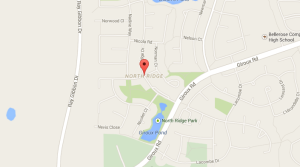
Mission Park St. Albert Real Estate Statistics – March 2015
Click here for all Mission Park homes for sale in St. Albert. The highest year-to-date sold price of a Mission Park home is $358,000. A total of 5 homes were sold in Mission Park from January to March, and a total of 2 homes were sold in Mission Park in March. On average, it takes 51 days to sell a Mission Park home. The average list price for a Mission Park home in March was $319,000, and the average sold price was $300,000. There are currently 3 homes and 6 condominiums for sale in Mission Park.
Ready to buy in Mission Park? – CLICK HERE!!!
Ready to sell in Mission Park? – CLICK HERE!!!
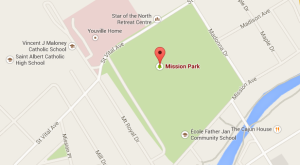
Lacombe Park St. Albert Real Estate Statistics – March 2015
Click here for all Lacombe Park homes for sale in St. Albert. There are currently 21 homes and 7 condominiums for sale in Lacombe Park. On average, it takes 9 days to sell a Lacombe Park home. A total of 8 Lacombe Park homes were sold in March, and 21 homes were sold from January to March. The average list price of a Lacombe Park home in March was $420,075, and the average sold price was $404,750. The highest year-to-date sold price of a Lacombe Park home is $1,040,000. There are currently 21 homes and 7 condominiums for sale in Lacombe Park.
Ready to buy in Lacombe Park? – CLICK HERE!!!
Ready to sell in Lacombe Park? – CLICK HERE!!!
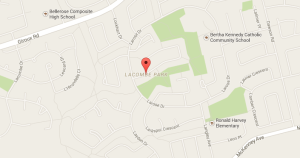
This is the Secondary Sidebar Widget Area. You can add content to this area by visiting your Widgets Panel and adding new widgets to this area.
Direct:
780.718.8400
Office:
780.458.8300
Fax: 780.458.6619
Email: don@doncholak.com
RE/MAX PROFESSIONALS
12 Hebert Road
St. Albert, AB T8N 5T8
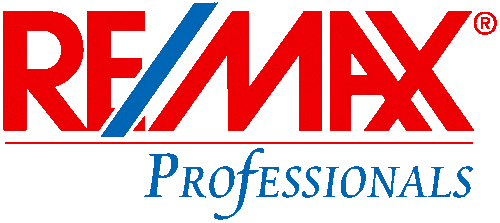
Trademarks are owned or controlled by The Canadian Real Estate Association (CREA) and identify real estate professionals who are members of CREA (REALTOR®) and/or the quality of services they provide (MLS®).
Copyright © 2024 · Don Cholak Realty · Website by Real Agent Connect ·